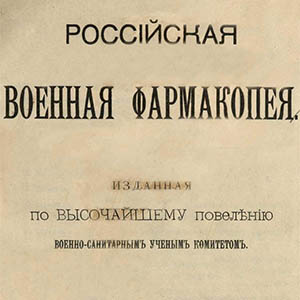
Капли датского короля
Капли датского короля.
Российская военная фармакопея, 1913 год.


Наше предприятие осуществляет заготовку, сушку и реализацию пряно-ароматического и лекарственного…
Европейская Фармакопея издание 7.0 часть 1 2010 год (Ph. Eur. 7.0) стр. 1160 Можжевельника плоды
01/2008:1532
JUNIPER
Iuniperi pseudo-fructus
DEFINITION
Dried ripe cone berry of Juniperus communis L.
Content: minimum 10 mL/kg of essential oil (anhydrous drug).
CHARACTERS
Strongly aromatic odour, especially if crushed.
IDENTIFICATION
A. The berry-shaped cone is globular, up to 10 mm in diameter, and violet-brown or blackish-brown, frequently with a bluish bloom. It consists of 3 fleshy scales. The apex has a three-rayed closed cleft and 3 not very clearly defined projections. A remnant of peduncle is frequently attached at the base. The fleshy part is crumbly and brownish. It contains 3 or, more rarely, 2 small, elongated, extremely hard seeds that have 3 sharp edges and are slightly rounded at the back, acuminate at the apex. The seeds are fused with the fleshy part of the cone berry in the lower part on the outside of their bases. Very large, oval oil glands containing sticky resin lie at the outer surface of the seeds.
B. Reduce to a powder (355) (2.9.12). The powder is brown. Examine under a microscope, using chloral hydrate solution R. The powder shows the following diagnostic characters: fragments of epidermis of the cone berry wall containing cells with thick, pitted, colourless walls and brown glandular content, occasionnally with anomocytic stomata (2.8.3); fragments of the three-rayed apical cleft of the cone berry with spaces and epidermal cells interlocked by papillous outgrowths; fragments of the hypodermis with collenchymatous thickened cells; fragments of the mesocarp consisting of large thin-walled parenchymatous cells, usually rounded, with large intercellular spaces and irregular, large, usually scarcely pitted, yellow idioblasts (barrel cells); fragments of schizogenous oil cells; fragments of the testa with thick-walled, pitted, colourless sclereids containing one or several prism crystals of calcium oxalate; fragments of the endosperm and embryonic tissue with thin-walled cells containing fatty oil and aleurone grains.
C. Thin-layer chromatography (2.2.27).
Test solution. Dilute the oil-xylene mixture obtained in the assay to 5.0 mL with hexane R.
Reference solution. Dissolve 4.0 mg of guaiazulene R and 50 μL of cineole R in 10 mL of hexane R.
Plate: TLC silica gel plate R.
Mobile phase: ethyl acetate R, toluene R (5:95 V/V).
Application: 20 μL of the test solution and 10 μL of the reference solution, as bands.
Development: over a path of 15 cm.
Drying: in air.
Detection: spray the plate with anisaldehyde solution R. Heat at 100-105 °C for 5-10 min and examine in daylight.
Results: the chromatogram obtained with the reference solution shows a red zone (guaiazulene) in the upper half and a brownish-violet or greyish-violet zone (cineole) in the lower half. The chromatogram obtained with the test solution shows a strong violet zone (mono- and sesquiterpenes) similar in position to the zone due to guaiazulene in the chromatogram obtained with the reference solution, a reddish-violet zone a little above the zone due to cineole in the chromatogram obtained with the reference solution, a greyish-violet zone (terpinen-4-ol) a little below the zone due to cineole in the chromatogram obtained with the reference solution, and just below that a blue zone. A faint violet zone may be present in a similar position to the zone due to cineole. Further zones are present.
TESTS
Foreign matter (2.8.2): maximum 5 per cent of unripe or discoloured cone berries and maximum 2 per cent of other foreign matter.
Water (2.2.13): maximum 120 mL/kg, determined on 20.0 g of the crushed drug.
Total ash (2.4.16): maximum 4.0 per cent.
ASSAY
Carry out the determination of essential oils in herbal drugs (2.8.12). Use 20.0 g of drug crushed immediately before the assay, a 500 mL round-bottomed flask, 200 mL of water R as the distillation liquid and 0.5 mL of xylene R in the graduated tube. Distil at a rate of 3-4 mL/min for 90 min.